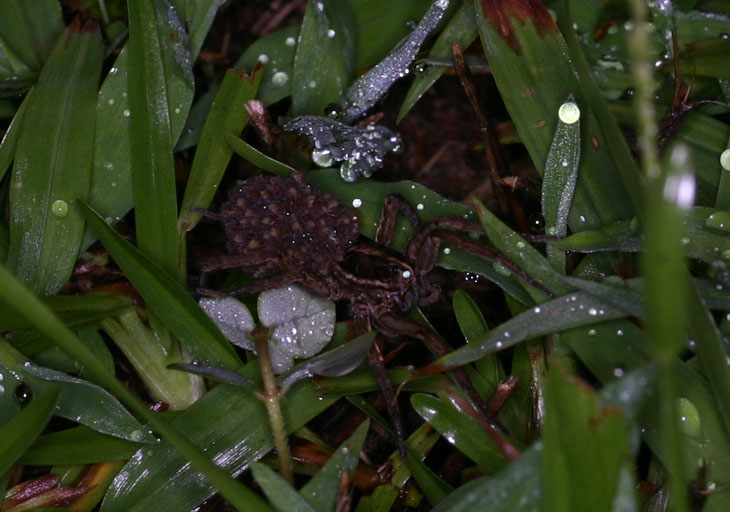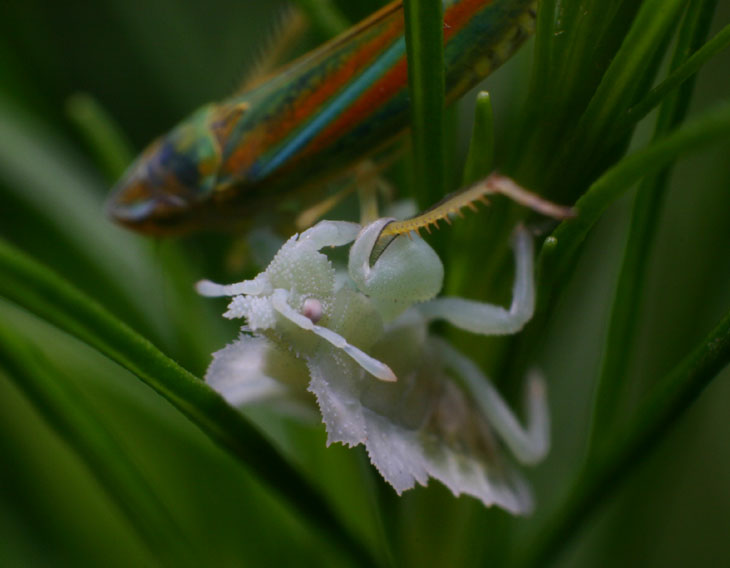Walkabout podcast – But how? Part 10
It’s admittedly been a while since the last ‘But how?‘ post, and the reason is, I’ve been having trouble finding further topics that fit the goal (which is demonstrating how a secular worldview answers more than what religion is often claimed to do.) So there’s a modicum of irony in this one, in that the question I’m tackling is about unanswered questions. Since I can’t think of a way to phrase this in the form of a question that covers all the bases (no Jeopardy! champion here,) let’s just jump into the topic of uncertainty.
I want to get the fatuous example out of the way first, because it disturbs me how often I hear it and I’d rather deal with ideas that demonstrate the possession of brain cells. There really is an argument that “science” changes all the time, but scripture is perpetual and unchanging, and this is made as if it’s a point in scripture’s favor. Now, seriously, who gives a rat’s ass about something unchanging if it’s perpetually wrong? We all know people like that, and they’re assholes – I personally would far rather hang with someone who can learn. Hidden within this is a subtler, but much more important fact: science is a process, not a religion unto itself, and a process intended to be utilized by us imperfect humans. Its ability to find and accept corrections is most of what makes it so useful. There is an interesting avenue of psychological research into why someone would possibly place more value on permanence than accuracy, but that’s for someone else to pursue.
One of the primary assets of religion, according to the manufacturer, is how it provides answers. Faced with the uncertainty of life’s purpose, or the path one should be taking, or how to get children to eat their vegetables, religion is invariably brought up. That religion itself may actually be a manifestation of the desire for answers is something examined in part four. What can be found most often though, if one examines these religious answers, isn’t practical solutions or explanations, but emotional supplication – assurances that we’re special, or that life really is fair, or that misfortune has a useful purpose. Such answers have a modicum of value it would seem, especially if the alleviation of superficial anxiety is all that was needed.
Science and naturalism and secularism, in contrast, present poor substitutions for emotional surety. There appears to be no purpose to life, and no assurance that it’s fair. Humans aren’t special, at least in the way we’ve been told, and evolved from filthy brutish beasts, except that we don’t even have a distinct line to follow and more bits keep getting added or changed. Morality is not a set of rules (especially ones that place us firmly on the preferred side) but an amorphous concept influenced by culture and debate. And death really is the end, without appeal – in whatever sense of the word you prefer.
Actually, that last one is just the opposite, an example of distinct surety negating any idea of judgment or consequence, isn’t it? And this highlights the same thing mentioned earlier: answers that are only acceptable if they’re what we want to hear. Science and naturalism and secularism have very distinct answers to all of these, and many more things besides; some of the questions are only present because of gross misunderstanding or rigid perspective (often created by religious teachings, imagine that,) while some of the uncertainties are selected and highlighted precisely because they strengthen the religious worldview. As an example of the latter, we can see that “missing links” and unclear lineages in the human evolutionary tree are seized upon repeatedly, while ignoring the millions of data bits that demonstrate the presence of evolution in the first place, not to mention the gross mismatch between the fossil record we can find everywhere and the superficial creation stories from scripture. We do not need to have a complete human lineage to infer that there is one, any more that we need to have seen someone break the window to determine what happened. If we find broken glass inside the house, and look around and indeed find the suspected baseball, this supports the theory of how it occurred – and this is exactly what we continually find with the theory of evolution.
There may be no overriding purpose to life, but this does not mean individuals cannot possess their own – the freedom to do so, in fact, is preferred much more than predestination, and even what ‘free will’ was invented to allow. Morality isn’t about rules to be dictated, but a goal to be pursued, and requires knowing what the goal is (choosing benefit over detriment to the greatest degree, in case I actually have to inform anyone) – coupled with realizing when actions are motivated by other emotions; psychology and evolution have helped us to understand what factors impinge on this and why. And there really isn’t any reason to differentiate us from “beasts,” nor a reason to be worried about this; humans are actually much more self-destructive than nearly all other species anyway, so there’s no high horse to sneer down from.
All of these highlight a particular idea: that uncertainty is a human trait, prompting us to search for answers – but some answers are explanatory and fit together in the big tapestry of naturalistic physics, while others are just intended to make us feel better. Which means some people are driven solely by their self-indulgence, while others seeks answers because they answer the question.
We can see this in sharp relief when we examine the religious answers with the same eye as the scientific ones. Despite a few thousand years of any (unchanging, mind you) religion, we still seem to have people seeking answers. The purpose of life is different for anyone you ask, often hiding behind the skirts of “something bigger than we can fathom” – so the answer actually is, “We don’t know”? Yeah, fabulous. Even religious moral guidance doesn’t present any end goals or decent structure, but lists of proscribed actions often overlaid with stroking the ego of a perfect being (producing a peculiar definition of “perfect” in the process.) Most of the scriptural accounts portray incredibly ludicrous events and motivations, intertwined with myriad ways of justifying the bigotry and classism that we actually want morality to get us away from. Even Sophisticated Theologians™ cannot agree on what ‘The Fall’ or ‘The Resurrection’ actually accomplished, and chapters within scripture routinely contradict themselves, or portray wildly variable goals and personalities for any god. It’s frankly astounding how anyone can derive something approaching answers from this, and it becomes far worse when we capriciously consider all religions and try to objectively decide on which is most accurate.
This rarely happens, of course, because the ‘certainty’ of religion is mostly repetition, and placing a ridiculous positive value on faith, defined as certainty without evidence. The structure of too many religions is to reinforce a mode of thinking, avoiding independent thought, actively discouraging the unwanted penetrating questions, and demonizing (a ha ha) any opposition. There have been numerous psychological studies over how people tend to follow the crowd and reflect what popular opinion is, rather than trust their own judgment, and naturally this is exploited as well – does anyone believe there’s really a point to weekly religious meetings over a finite (and unchanging, let’s not forget that) set of scripture?
All of that comprises the top reason given among those who have abandoned religion: it didn’t make sense, didn’t try, and alienated (sometimes quite vociferously) anyone who desired real answers. Religion does not alleviate uncertainty at all, it just attempts to obscure it and assert circumstances that don’t connect with anything that we can rely on, while explaining nothing. It’s one thing to find a new question underneath any particular answer; this is, indeed, why science goes on. It’s yet another to receive a statement that doesn’t actually answer any question and yet raises more of its own, where the requests for clarification are met with vague appeals or outright hostility, making uncertainty seem shameful and the quest for knowledge to be wrong. If you ever wanted to know what brainwashing looks like, just pay attention to the religious response to any scientific finding that proves scripture inaccurate. In fact, the stunning amount of censorship from religious folk demonstrates very forcefully that religion is not about seeking or providing answers.
It’s abundantly obvious that we are a species prone to uncertainty – and this is no bad thing, because it motivates us to try and eradicate it, producing curiosity and interest and the drive to learn more about our world. Science embraces this, encouraging investigation and promoting methods that reduce uncertainty as much as possible, at the same time presenting the collective efforts of millions to anyone who really wants to know more. But we don’t even need to go that far, as we address our own uncertainties by finding out what’s wrong with the car, going to the doctor, rooting through a box of old items, or simply reading to the end of a murder mystery. Religion, on the other hand, presents responses which explain little and lead nowhere, not even giving a likely indication of what we can expect. Its certainty doesn’t come from clarification or prediction, only from assertion and repetition, often in the face of contrary evidence – this attempts to change the definition of “certainty” to something like “blind acceptance.” For many, that’s just not enough – they don’t want to have faith, they want to have confidence. And we can thank this lack of blind acceptance for the vast majority of advancements we’ve made as a species.


































































 I close with a scale shot, more or less since I didn’t want to disturb my model – I just grabbed some identical fennel leaves nearby, which is a lot more illustrative than providing the body dimensions. Hopefully you get the idea that it’s easy to blow past one of these unless you’re paying close attention, and of course it’s significantly harder when the camouflage has kicked in. Arthropod photography often requires close examination of likely habitats, but the nice bit is, almost anything is a likely habitat for something, and you can pursue a wide variety of subjects in your own yard. Just be aware that neighbors walking their dog past at night might find the camera strobe going off to be curious, if not outright startling ;-).
I close with a scale shot, more or less since I didn’t want to disturb my model – I just grabbed some identical fennel leaves nearby, which is a lot more illustrative than providing the body dimensions. Hopefully you get the idea that it’s easy to blow past one of these unless you’re paying close attention, and of course it’s significantly harder when the camouflage has kicked in. Arthropod photography often requires close examination of likely habitats, but the nice bit is, almost anything is a likely habitat for something, and you can pursue a wide variety of subjects in your own yard. Just be aware that neighbors walking their dog past at night might find the camera strobe going off to be curious, if not outright startling ;-). As several separate thunderstorm cells moved through tonight, I was watching the inordinate amount of electrical activity lighting up the sky like a disco strobe, and figured I should be doing something about it. I haven’t pursued much lightning photography in my current location because it’s remarkably difficult to find a good setting. This area of central NC is loaded with trees, and electrical storms tend to stay close to the horizon, so wide open spaces are much better, preferably with some kind of foreground interest (lakes, lone trees, abandoned houses, mad scientist’s lairs.) Even though I’ve actively scouted for such things, I haven’t found many.
As several separate thunderstorm cells moved through tonight, I was watching the inordinate amount of electrical activity lighting up the sky like a disco strobe, and figured I should be doing something about it. I haven’t pursued much lightning photography in my current location because it’s remarkably difficult to find a good setting. This area of central NC is loaded with trees, and electrical storms tend to stay close to the horizon, so wide open spaces are much better, preferably with some kind of foreground interest (lakes, lone trees, abandoned houses, mad scientist’s lairs.) Even though I’ve actively scouted for such things, I haven’t found many.




 While I was poking around the park trying unsuccessfully to locate the translucent caterpillars, I still took the opportunity to gather other images as well. We return now to
While I was poking around the park trying unsuccessfully to locate the translucent caterpillars, I still took the opportunity to gather other images as well. We return now to 